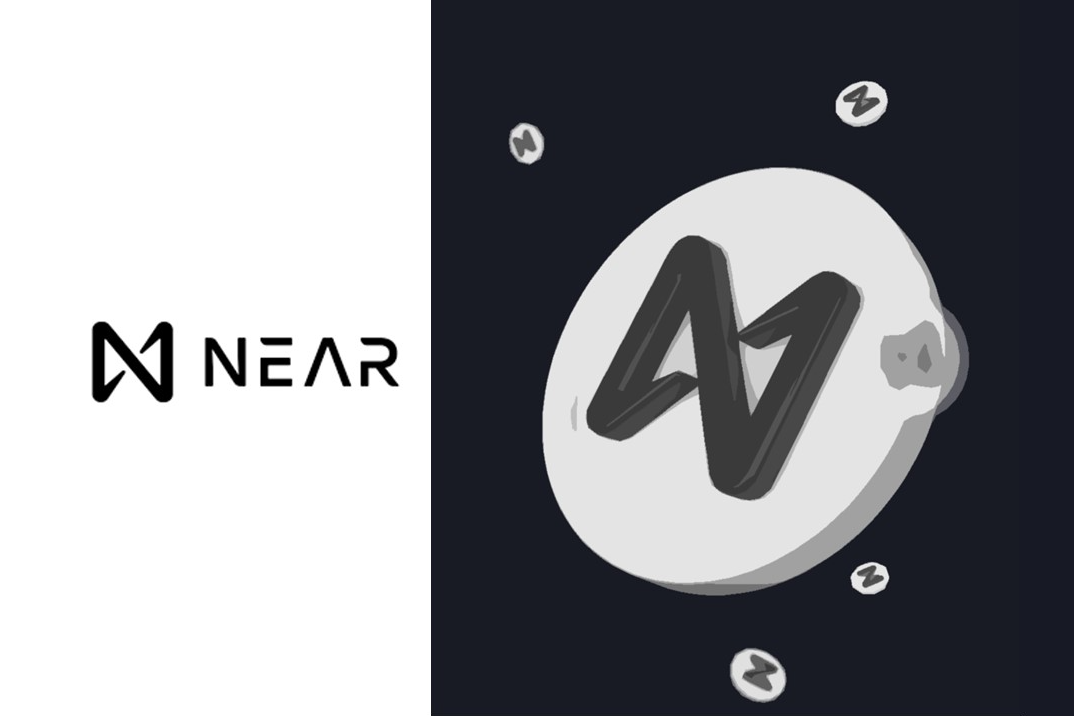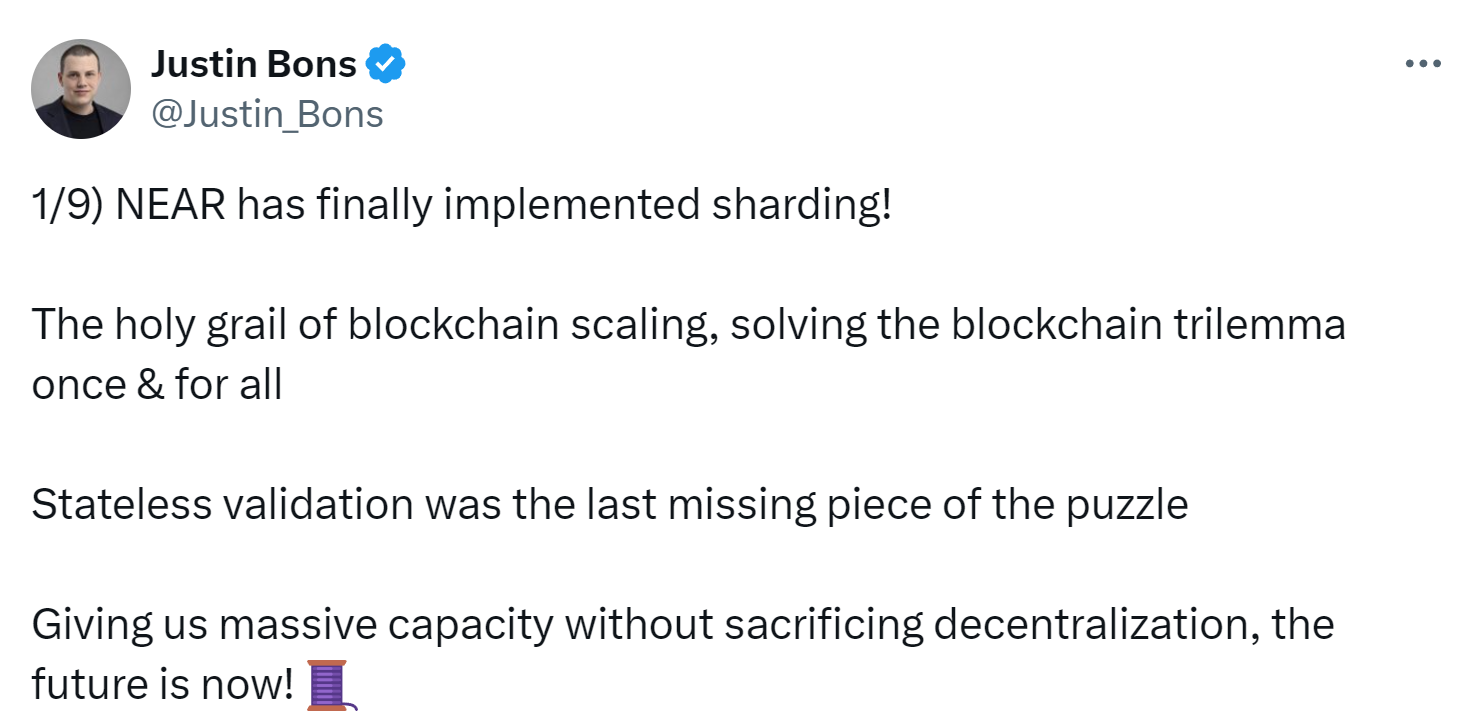2024-09-25

NEAR Protocol has officially implemented full sharding, marking a breakthrough in blockchain scalability, according to Justin Bons, founder and CIO of Cyber Capital, one of Europe's oldest cryptocurrency funds.

On Sept 23, 2024, Bons announced the
milestone on X (formerly Twitter), hailing it as a game-changer that addresses
the long-standing blockchain trilemma—balancing security, decentralization, and
scalability—once and for all.
Sharding, a horizontal scaling
solution, breaks up the processing workload among different groupings of nodes,
or shards, allowing for linear growth and unbounded scalability.
This contrasts with traditional
blockchain models where all nodes verify all transactions, a process that
becomes inefficient at scale. By distributing the state among shards, NEAR
enables a more efficient and scalable infrastructure.
Bons also noted that while Ethereum
initially pursued sharding as part of its development, it shifted focus to
Layer 2 (L2) scaling solutions by 2022, citing the complexity of implementing
sharding. NEAR, however, has succeeded where Ethereum pivoted, joining a small
group of blockchains, including EGLD, to implement sharding in production.
NEAR's sharding system is unique in its
approach. Unlike other chains that rely on a central beacon or meta chain to
coordinate shards, NEAR allows shards to produce chunks that are merged into a
single block.
This reduces bottlenecks and boosts
efficiency, even at high transaction rates. The protocol also leverages
stateless validation to shuffle nodes between shards more quickly, maintaining
Layer 1 (L1) security across all shards.
A standout feature of NEAR’s sharding
implementation is its perfect interoperability between shards, enabling
seamless communication and eliminating the fragmentation challenges seen in
other blockchains. This integrated design makes Layer 2 scaling solutions
increasingly unnecessary, as NEAR's architecture provides superior scalability
without compromising composability.
While sharding may introduce a slight
delay compared to purely parallelized systems, Bons argued that the trade-off
is minimal and justified given the comprehensive benefits of NEAR's design.
NEAR's successful sharding launch
positions it as a leader in blockchain scalability, challenging existing models
like Ethereum's L2 scaling and setting a new standard for decentralized
networks.